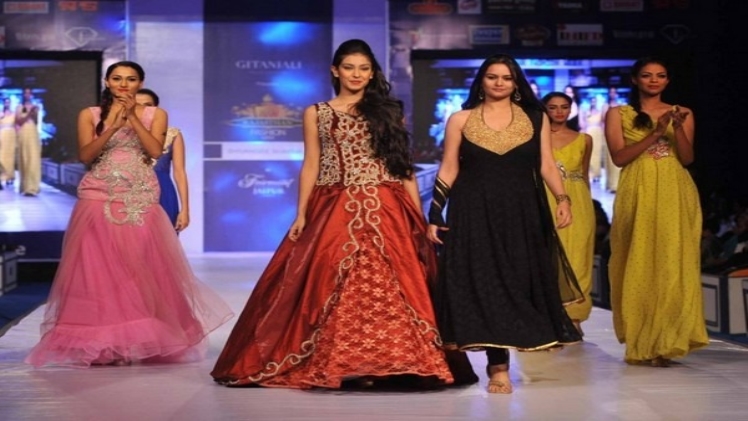Indian fashion is a vibrant tapestry woven with threads of tradition, culture, and modernity. Over the centuries, it has evolved from the intricate weaves of ancient times to the contemporary styles seen on today’s runways. This evolution reflects the dynamic interplay between India’s rich heritage and the influences of globalization, resulting in a fashion landscape that is both diverse and innovative.
Ancient Roots: Tradition and Heritage
Indian fashion has roots deep in the country’s history, dating back thousands of years. Ancient texts and archaeological findings reveal that clothing in India was a means of covering the body and a form of artistic expression.
Traditional Attire
- Saree: The saree, perhaps the most iconic symbol of Indian fashion, dates back to the Indus Valley Civilization. This unstitched garment, draped elegantly around the body, symbolizes grace and versatility. Each region in India has its unique style of draping and fabric, from the Banarasi silks of Varanasi to the Kanjeevarams of Tamil Nadu.
- Dhoti and Kurta: Traditional attire like the dhoti and kurta have been staples for men. The dhoti, a long piece of cloth wrapped around the waist and legs, and the kurta, a long shirt, are still worn in many parts of India, especially during festivals and rituals.
- Lehenga Choli: The lehenga choli, a traditional outfit comprising a skirt (lehenga), blouse (choli), and a dupatta (scarf), is another timeless ensemble, trendy in weddings and festive occasions.
Colonial Influence: A Blend of Cultures
The colonial era brought significant changes to Indian fashion. The British influence introduced new fabrics, designs, and dressing styles, which led to a blend of Western and Indian aesthetics.
The Fusion of Styles
- Salwar Kameez: The salwar kameez, originating from the Mughal era, gained popularity during the colonial period. This outfit consists of a tunic (kameez), trousers (salwar), and a scarf (dupatta), offering comfort and style.
- Blouses and Petticoats: The British influence led to the adopting of blouses and dresses with sarees, adding a new dimension to this traditional attire. This period also saw the introduction of Western-style tailoring and fabrics.
Post-Independence: Revival and Innovation
After gaining independence in 1947, India saw a resurgence of interest in its cultural heritage, reflected in fashion. Designers began experimenting with traditional textiles and crafts, bringing them into the contemporary fashion scene.
The Rise of Indian Designers
- Revival of Handlooms: The 1960s and 70s witnessed a revival of handloom industries. Designers like Ritu Kumar started incorporating traditional crafts into modern designs, bridging the past and the present.
- Bollywood Influence: Bollywood has played a significant role in shaping Indian fashion. Iconic films and actors have popularized certain styles, such as the glamorous sarees worn by actresses in the 1970s and 80s, influencing everyday fashion trends.
Globalization: Modernity and Beyond
Indian fashion became part of the global fashion dialogue in the late 20th and early 21st centuries. Indian designers are celebrated on international runways, and there is a growing appreciation for Indian textiles and craftsmanship worldwide.
Contemporary Trends
- Fusion Wear: Modern Indian fashion often blends traditional elements with Western styles, creating fusion wear. This includes pairing jeans with kurtas, wearing sarees with crop tops, and experimenting with silhouettes and fabrics.
- Sustainable Fashion: There is a growing movement towards sustainable fashion in India, with designers focusing on eco-friendly materials and ethical production methods. Handloom fabrics, organic dyes, and sustainable practices are gaining prominence.
- Tech and Fashion: The advent of technology has also influenced Indian fashion. Digital prints, 3D embroidery, and intelligent textiles are becoming more prevalent, pushing the boundaries of creativity and innovation.
Conclusion
The evolution of Indian fashion from tradition to modernity is a testament to the country’s rich cultural heritage and ability to adapt and innovate. From the timeless saree to contemporary fusion wear, Indian fashion continues to captivate and inspire. As it moves forward, it remains rooted in its traditions while embracing the new, creating a vibrant and dynamic fashion landscape that is uniquely Indian.

